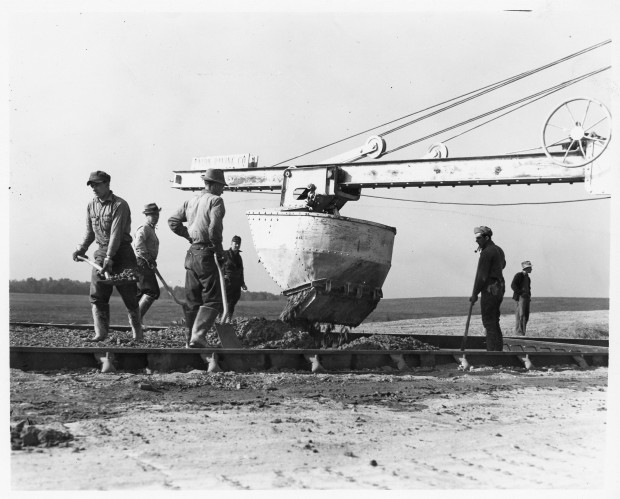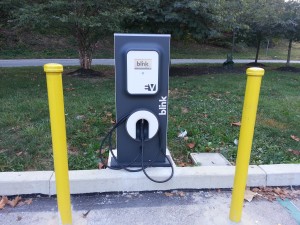At 74, the Pennsylvania Turnpike looks to the future of fueling

Workers spread concrete by hand in Somerset, Pa. during construction of the Pennsylvania Turnpike in 1939.
The Pennsylvania Turnpike turns 74 years old today. The vast majority of the roughly 190 million drivers who travel the toll road every year rely on gasoline for fuel just as they did when it first opened on October 1, 1940.
This week, StateImpact Pennsylvania has been taking a journey across the turnpike, exploring the state’s energy past and present and a future that may be shaped by efforts to fight climate change and cut down on greenhouse gases. Click here to see our story map.
According to the federal Environmental Protection Agency, about one-third of the nation’s carbon dioxide emissions come from the transportation sector, ranking second behind power plants. Yet, cars that run on natural gas, electricity and other lower-carbon alternatives haven’t become mainstream.
The Pennsylvania Turnpike Commission is trying to offer new options – in part, to lower its own carbon footprint, but also because the state is offering millions of dollars in grants to create new markets for alternative fuels.

An electric vehicle charging station at the King of Prussia Service Plaza on the Pennsylvania Turnpike.
The commission recently started construction on a compressed natural gas or CNG station in western Pennsylvania. This past spring, the commission opened electric vehicle charging stations at four of its service plazas with the help of a one million dollar grant from the state Department of Environmental Protection.
So far, demand is very low. The chargers have only been used about 45 times.
“[It] is kind of the chicken and egg syndrome,” said Jack Christensen, the turnpike’s director of facilities and energy management operations. “Should we put it in? If we build it will they come? We think they will.”
The commission eventually plans to build EV charging stations at all 17 service plazas, but building the necessary infrastructure and negotiating with electric utilities is slowing down the process. Two more CNG stations are also in the works.
The road is slow, but Christensen believes the service plazas of the future will be more diverse than they are now.
“You’re going to see multiple levels of different options and I think that’s the trend in the industry today.”
















